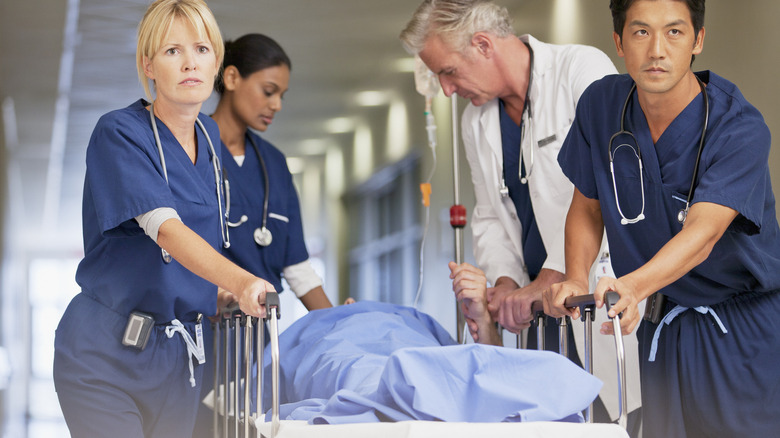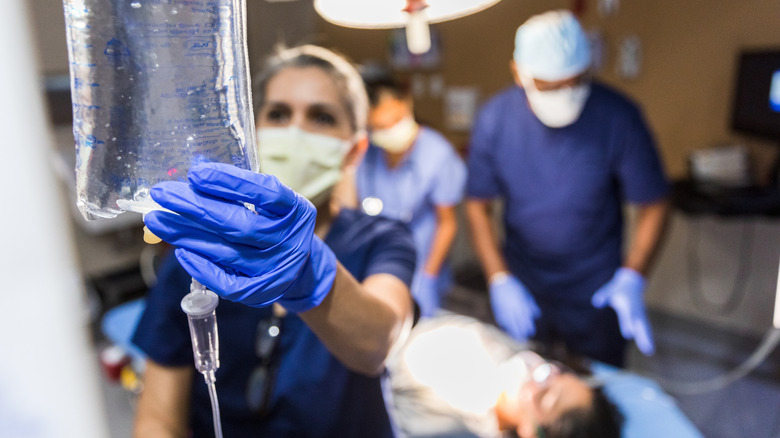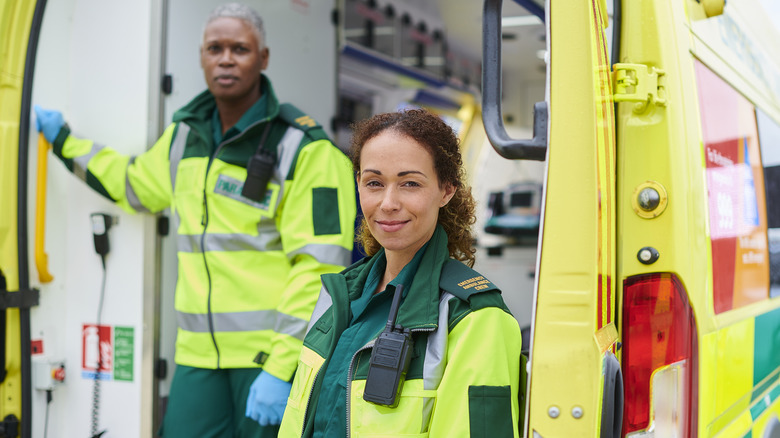What It Means When A Patient Experiences The Triad Of Death
If you slip on something and sprain your ankle, you'll probably head to the emergency room to make sure nothing is broken. While emergency rooms often handle things like broken bones, fainting, or signs of a heart attack or stroke, a trauma center within the ER works on more extreme situations, according to Unity Point Health. Patients typically arrive at a trauma center in an ambulance as a result of a serious car crash, a gunshot or stab wound, or significant brain injuries.
Trauma centers involve surgeons and advanced equipment to handle life-threatening injuries. When a patient enters a trauma unit, significant blood loss and tissue damage are likely to occur, according to PerSys Medical. If untreated, this blood loss can result in a series of three conditions within the body that can rapidly lead to death. The combination of hypothermia, acidosis, and coagulopathy creates a vicious cycle where each component worsens the others.
The three conditions that can lead to death in trauma patients
Patients who arrive at trauma centers might have already lost a lot of blood. As the blood loses oxygen, cells use glucose, which can cause lactic acid to build up in the bloodstream. This buildup is called acidosis. Acidosis interferes with the body's ability to clot and stop excess bleeding, which is called coagulopathy. This excess bleeding worsens the acidosis.
Meanwhile, losing more blood also causes the blood pressure to drop, and the body temperature drops as a result, causing hypothermia. There's also less blood in the body to keep its core temperature normal. Hypothermia makes the coagulopathy worse, so all three conditions worsen the health of the patient. A 2012 article in Emergency Medicine Journal looked at patient records from a trauma center that had the triad of death. Almost half of the 90 patients died when they had all three conditions of the triad of death, and no patients survived whose coagulopathy was at a certain level.
How emergency personnel handle the triad of death
When first responders arrive at the scene of a trauma, EMTs look for the source of bleeding and use devices or pressure to help stop the blood loss, according to EMS1. The EMTs also make sure the trauma patient can breathe, so they assist with opening air passages and making sure the right amount of air is getting into their lungs. It's also important for the blood to circulate so that the patient doesn't go into shock.
The EMTs will also make sure that the patient's core body temperature doesn't drop to dangerous levels. According to EMTprep, moderate hypothermia is addressed by using heating blankets and heating packs on the armpits, groin, and neck.
Although the triad of death involves hypothermia, acidosis, and coagulopathy, a 2022 article in Diagnostics says that dangerously low blood pressure could be another factor. The study found that trauma patients had a 29% survival rate when they just had one factor of the "tetrad" of death. If three of these conditions were present, patients had an 84% survival rate. Any patient with all four conditions did not survive the trauma.



